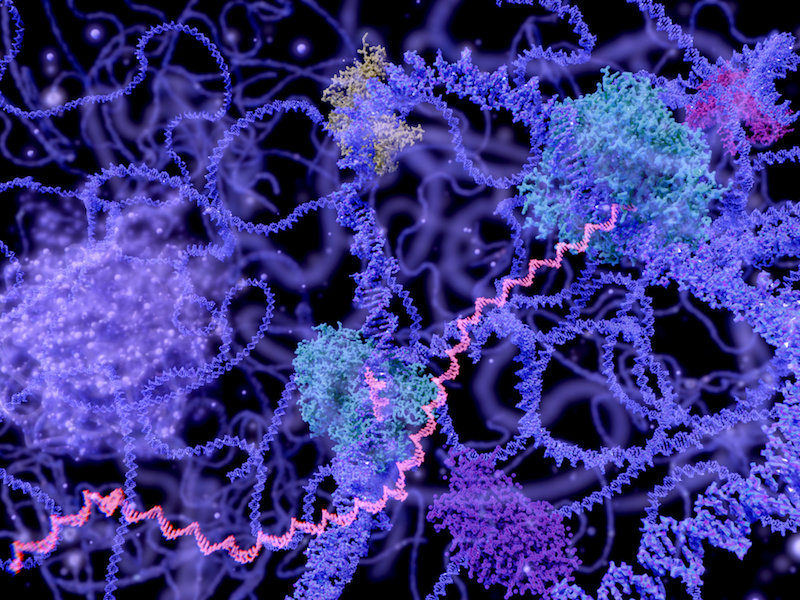From gene to protein
Each cell in our body contains the same DNA, yet different cells, like brain cells or muscle cells, have different functions. The differences in cell function depend on which parts of the genetic information (called genes) are active in each cell. The genetic information stored in these genes is translated by specialized translation factories called ribosomes. Ribosomes read the genetic code and assemble proteins based on the information stored in this genetic code analogous to a factory building a machine based on a blueprint. Proteins are the workhorses of our body and perform the functions encoded in our genes. For our cells and organs to function correctly, it is critical that the genetic information stored in our genes is translated accurately to proteins. If the genetic code is translated incorrectly, harmful proteins can be produced, which can lead to neurological diseases such as Huntington's disease.
The 'reading frame' of genes
The genetic code is translated in groups of 3 letters, each resembling a word, which is translated into a single part of the protein. If a ribosome starts translating the code at the wrong position, a shift in the 3-letter-code can occur. For example, the sentence below should read:
"the man saw his new red car"
However, if a ribosome starts translating this sentence one letter too late, the sentence would read:
"hem ans awh isn ewr edc ar"
In the case of the genetic code, this phenomenon is called 'out-of-frame' translation. Sanne Boersma, researcher at the Hubrecht Institute explains: "As illustrated by the example sentence, out-of-frame translation has a big effect on the protein and usually results in a protein that behaves differently and can damage the cell." Until now, it was unclear how the ribosome knows where to start translating the code, and how often the ribosome gets it wrong.
A new method: SunTag and MoonTag
The researchers developed a new method to visualize the decoding of our genetic information in living cells. They were able to label different protein products in different colors and visualize the production of each type of protein using advanced microscopy. Each protein was labeled using a specific label, or tag, called the SunTag and MoonTag, which they could see through the microscope. By combining the MoonTag and the SunTag, the researchers could now see for the first time how often out-of-frame translation takes place.
A big surprise
The researchers discovered that out-of-frame translation happens surprisingly frequently. In extreme cases, almost half of all the proteins that were built, used a different reading frame or code than the expected code. These surprising findings show that the genetic information stored in our DNA is far more complex than previously thought. Based on the new study, our DNA likely encodes thousands of previously unknown proteins with unknown functions. Sanne Boersma: "Because of our study, we can now ask very important questions: what do all these new proteins do? Do they have important functions in our body or are they waste side-products of translation that can damage our cells?"
Related Multimedia: Journal Reference:
- Sanne Boersma, Deepak Khuperkar, Bram M.P. Verhagen, Stijn Sonneveld, Jonathan B. Grimm, Luke D. Lavis, Marvin E. Tanenbaum. Multi-Color Single-Molecule Imaging Uncovers Extensive Heterogeneity in mRNA Decoding. Cell, 2019; DOI: 10.1016/j.cell.2019.05.001




And there's no way a frame-shift translation is going to produce a functional protein. It has about as much chance folding as "hem ans awh isn ewr edc ar" has a chance to tell you how to build a robot. Sounds like somebody had the wrong expectations.